GST is a trust based taxation regime wherein the tax payer is required to self-assess his returns and determine tax liability without any intervention by the tax official. Therefore a tax regime that relies on self-assessment has to put in place a robust audit mechanism to measure and ensure compliance of the provisions of law by the taxable person.
“Audit” has been defined in section 2(13) of the CGST Act, 2017 and it means the examination of records, returns and other documents maintained or furnished by the registered person under the GST Acts or the rules made there under or under any other law for the time being in force to verify the correctness of turnover declared, taxes paid, refund claimed and input tax credit availed, and to assess his compliance with the provisions of the GST Acts or the rules made there-under.
GST envisages three types of Audit.
> The first type of audit is by a chartered accountant or a cost accountant. Every registered person whose aggregate turnover during a financial year exceeds two crore rupees has to get his accounts audited by a chartered accountant or a cost accountant and furnish a copy of audited annual accounts and a reconciliation statement, duly certified, in FORM GSTR-9C. As per 43rd GST Council meeting outcome, GSTR-9 shall continue to be optional for taxpayers with turnover up to Rs. 2 crore, whereas GSTR-9C can be self-certified by taxpayers with turnover less than or equal to Rs. 5 crore from FY 2020-21 onwards.
> In the second type which is the normal audit, the Commissioner or any officer authorized by him, can undertake audit of any registered person for such period, at such frequency and in such manner as may be prescribed.
> The third type of audit is called the Special Audit. In Special Audit the registered person can be directed to get his records including books of account examined and audited by a chartered accountant or a cost accountant during any stage of scrutiny, inquiry, investigation or any other proceedings, depending upon the complexity of the case.
It is pertinently mention here that, none of these audits are mutually exclusive and under certain circumstances some registered persons may be subjected to both types of audit. Let us examine the same with pictographic representation.
In this article, I am not going to anticipate every situation or about each and every corner of Audit provisions about audit and scrutiny. I am intending to impart elaborate description on how the departments perception while concluding the Audit and what are the basic parameters stressed by the department. The procedures and practices stated in this article are mere guidelines to help and support the departmental officers in the course of their duty. The procedures and practices are subject to change. This is not a source of legal authority for audit or scrutiny neither a limitation upon the application of personal ideas by department audit officer.
Audit by Tax Authorities-Legal Background
Section 65 read with rule 101- Power to audit and procedure of audit, obligation of taxpayer.
(1) The Commissioner or any officer authorized by him, by way of a general or a specific order, may undertake audit of any registered person for such period, at such frequency and in such manner as may be prescribed.
(2) The officers referred to in sub-section (1) may conduct audit at the place of business of the registered person or in their office.
(3) The registered person shall be informed by way of a notice not less than fifteen working days prior to the conduct of audit in such manner as may be prescribed.
(4) The audit under sub-section (1) shall be completed within a period of three months from the date of commencement of the audit:
Provided that where the Commissioner is satisfied that audit in respect of such registered person cannot be completed within three months, he may, for the reasons to be recorded in writing, extend the period by a further period not exceeding six months.
Explanation.––For the purposes of this sub-section, the expression “commencement of audit” shall mean the date on which the records and other documents, called for by the tax authorities, are made available by the registered person or the actual institution of audit at the place of business, whichever is later.
(5) During the course of audit, the authorized officer may require the registered person,— (i) To afford him the necessary facility to verify the books of account or other documents as he may require; (ii) To furnish such information as he may require and render assistance for timely completion of the audit.
(6) On conclusion of audit, the proper officer shall, within thirty days, inform the registered person, whose records are audited, about the findings, his rights and obligations and the reasons for such findings.
(7) Where the audit conducted under sub-section (1) results in detection of tax not paid or short paid or erroneously refunded, or input tax credit wrongly availed or utilized, the proper officer may initiate action under section 73 or section 74.
Purpose of Audit by Tax Authorities.
(i) Verify the correctness of (a) Turnover declared; (b) Taxes paid; (c) Refund claimed; (d) Input tax credit availed;
(ii) Assessment of tax compliance by the taxpayer,
(iii) Detection of revenue leakage, recovery and
(iv) Facilitating the taxpayer in ease of doing business by making him aware of rules/regulations and its application.
(v) Maintenance of adequate standards of accounting for trade and industries.
Procedural Aspects and GST Audit Manuals.
CBIC has brought out comprehensive GST Audit Manual (GSTAM-19)to facilitate the Audit Officers for smooth conduct of Audit of the Tax payers. The audit manual is well structured and it is very essential that the working notes should be completely filled by the audit team in order to make the audit effective. GSTAM-19 has been adopted by many states. However, some other states like Himachal Pradesh, Punjab, Karnataka, Utterpradesh, Andhra Pradesh(Only for departmental circulation)have prepared their respective Audit Manuals which are broadly based on GSTAM-19 with meager changes keep in mind the conditions prevailed their states. This article is predominantly aimed to guide the officials, Guidelines provided and intended to ensure that the audit of taxpayers is carried out in a professional, efficient, and comprehensive manner while adhering to the stipulated principles and policies as per the best practices.
Flow of GST Audit carried by the Tax Authorities
√ Registered Persons Master Files (also called as tax payers master file TPMF).
√ Issuance of Notice for conduction audit under rule 101(2) of CGST Act 2017 in Form GST ADT-01.
√ Scrutiny of Importance Documents- Desk Review.
√ Verification of Ratio Analysis (For Goods and Services Separately).
√ Comparative charts from various financial statements/ Returns (Only for those registrants who are required to file Annual return u/s 44 of the CGST Act .)
√ Questioner for review of internal control system and walk through.
√ Preparation of effective Audit Plan.
√ Preparation of Audit Working Papers.
√ Preparation of Audit Verification Report or Draft Audit Report (DAR).
√ Draft of the letter to be written by the registered person U/s 73(6) of CGST ACT, 2017,
√ Final Audit Report under rule 101(5) of CGST Act 2017 in Form GST ADT-02.

Let us discuss in detail about C to C analysis of GST Audit carried by the tax authorities under section 65 read with rule 101 of CGST Act 2017.
Registered Person Master File(RPMF) or Tax Payers Master File (TPMF)
Proper maintenance of strong database required for profiling the tax payer who selected for audit under section 65 of CGST Act 2017. Risk parameters relevant to a registered person must be identified in a scientific and systematic manner while executing Audit. The audit process beginning from the taxpayers Master File, desk review, revenue risk analysis, trend analysis, gathering of information, evaluation of internal controls, scrutiny of annual financial statement, audit plan, audit verification, working papers, apprising the Taxpayer about irregularities noticed and ending with suggestions for future compliance. The first step towards an effective audit is to review all relevant information about the registered person. Whenever GST audit of a registered person taken up, the audit team conducting the audit should review the data already available and the data that is not available and collect the information not available and update the data of the tax payer. Tax Officers can resort Annexure-I of GSTAM-2019 while preparing master files and the information should be updated periodically after completion of audit. The audit working papers, audit report, duly approved during the audit monitoring committee meeting, along with latest documents should be filed properly.
Issuance of Notice for conduction audit in Form GST ADT-01.
Section 65 of the GST Act empowers tax officers to undertake GST Audits. If the authorized officer believes that an audit is necessary for any taxpayer, he/she has the authority to issue a notice in FORM-GST-ADT-01. Rule 102(2) of CGST Act 2017 envisaging the Notice for conducting Audit in Form GST ADT-01 in accordance with provisions. When issuance of the ADT-01 notice, tax payer required to, afford the tax officers, the necessary facility to verify the books of account and records or other documents as may be required and furnish such information as may be required and render assistance for timely Completion of the audit. Furthermore, the officer will do the required groundwork and depending upon the records to be verified he/she will decide whether the audit is to be carried out at the business premises of the taxpayer or the office of the officer. The place at which the audit will be carried out will be stated in this notice. In case there is a failure in complying with the elements of the notice, the officer will presume that the taxpayer is not in possession of the required records and documents. The officer has the authority to proceed against the taxpayer as he/she deems fit (as per the provisions of the act and rules) without making any further correspondence to the taxpayer.
Desk Review.
This is the first stage of the audit exercise done in the office. As soon as the Auditor receives the list of Tax Payers to be audited by him, he should at the outset collate the information .The audit process and methodology are to be as per the best practices adopted for decades which comply with the technical standards. The desk review is the preliminary review of the information of the information and data gathered about the assessee.
For carrying out the detailed analysis, the following documents should also be called from the Assessee or retrieved from the GSTN portal:
– GST returns with copy of Cash Ledger and Credit Ledger.
– Audited financials for the period under review along with copy of detailed Trial
Balance.
– Company’s Internal Audit Report, if any.
– Tax Audit Reports (including all Annexures) conducted under Sec 44AB of the Income Tax Act, 1961.
– Cost Audit Reports (including all Annexures) conducted under Section
148 of the Companies Act, 2013.
– Details of Registration(s) with any other Government Departments/
Agency / Regulatory Authority.
– Any other Return/ Declaration sent to any other Department/ Agency
/Regulatory Authority.
– List of Show Cause Notice(s) issued, if any and their present status.
For carrying out the detailed analysis, the following points should be kept in mind.
(a) Check whether the description of the supplies has been changed during the past three to four years, without affecting the nature of the supplies provided.
(b) The auditor (Tax Officer) should check the data provided by the taxpayer for reconciliation with other documents such as trial balance, Annual Accounts, Ledgers etc. collected by them and carry out a preliminary reconciliation for the purpose of identifying any amount that might have escaped Goods and Services Tax.
(c) Materiality: Every error also needs to be looked into from the perspective of materiality. The auditor has to use his experience and wisdom to decide the amount of time spent on identifying an error and its rectification.
(d) The auditor might also communicate with auditors of other registrations of the same person within or outside his state to check whether the error noted is an isolated one or is of recurring nature.
(e) Auditor should also verify the Bank Reconciliation Statement prepared by the taxpayer to find any amounts which have been shown as paid but are still pending clearance for long time, thereby, the reversal under Rule 16(4) may arise.
(f) Auditor should analyses both debit and credit side of the profit & loss a/c, trial balance, ledgers etc., because it is a myth that while ascertaining the GST liability of the taxpayer, one has to look only at the credit side of P&L A/c. Debit side is equally important or rather more prone to frauds and errors. Therefore, the auditor needs to pay attention towards debit side also. Debit side is important in the cases of RCM and Re-imbursements etc.( Unless the concept of pure agent is applicable, reimbursements are includible in the value of Taxable Supply.)
(g) Clause 4 of the Tax Audit Report (Form 3CD) provides information about whether the assessee is liable to pay indirect tax like excise duty, service tax, sales tax, goods and services tax, customs duty, etc. if yes, please furnish the registration number or GST number or any other identification number allotted for the same.
Despite above, the tax officer should verify the following records during the course of desk review.
1. Scrutiny of the tax audit report in FORM 3CD.
2. Scrutiny of the TDS certificates.
3. Notes on Financial Accounts.
4. Directors Report.
5. Statutory Auditor’s Report.
6. Indicative list of items to be examined in the Trial Balance / Profit & loss Account / Balance Sheet / Tax Audit Report.
7. Review of reconciliation with financial statements(GSTR-9C).
Verification of Ratio Analysis.
Ratio Analysis is a widely used tool of data analysis. The term ratio in it refers to the relationship expressed in mathematical terms between two individual figures or group of figures connected with each other in some logical manner and are selected from financial statements of the concern. The ratio analysis is based on the fact that a type of data expressed as a relative to some other figure may provide some significant information. Ratios look at the relationships between individual values and relate them to how a company has performed in the past and might perform in the future.
GST is a new tax regime. The taxpayers are still familiarizing themselves with the law. This could result in high possibility of errors by taxpayers. However, there could be a possibility that the taxpayers are non-compliant towards various provisions of the law. Further, the entire GST eco system is highly data oriented where multiple details are required to be submitted by the taxpayers to the tax authorities at the transaction level. This makes it possible for the revenue officers to have adequate data at their disposal
which could be used by them for the purpose of ratio analysis. There are several types of ratios which may be used for determining that the taxpayer has complied with the GST provisions –
1. Profitability Ratios
a. Net profit Ratio
b. Gross profit ratio
2. Revenue in books vs revenue in GST
3. Expenses and input tax ratios
a. Total ITC availed in GSTR-3B [Table 4(A)(5)] to Total ITC available in GSTR-2A
b. Expenses incurred from registered persons to total expenses (GSTR-2 expenses viz-a-viz total expenses)
c. Input tax utilised to input tax availed
d. ITC availed to Gross tax liability Ratio
e. ITC utilised to Gross tax liability Ratio
4. Reverse charge ratios
a. RCM credit availed vs RCM paid
5. Payment Ratio
These are some of the illustrative ratios. Similarly, there could be many other type of ratios which could be developed based on the specific organization. Such ratio could give a useful insight on the compliance pattern. Tax Audit officer can resort Annexure-IV of GSTAM-2019 for further course of action and to arrive proper conclusion with regard to ration analyses.
Questioner for review of internal control system and walk through.
Preliminary reconciliation will be done and the same will be available to the tax officers along with the questionnaire. In this regard, tax officer should normally examine the Characteristics of the company’s business and its activities as well as system of maintenance of records and accounts. Subsequently, tax officer should keepin mind that techniques for evaluations of the internal controls basis on walk-through. The tax officer verifies this transaction in the same sequence as it had moved. By this method the tax officer can get feel of the various processes and their inter linkages. This method also evaluate the internal control system of the tax payer. Tax officers, can resort Annexure-VI of GSTAM-2019 for effective questioner and effective walk through of inward and outward supplies of the taxpayer for proper scrutiny.
Audit Plan
The objective of preparing an audit plan is to outline a logical series of review and examination steps that would meet the goals and standards of an audit in an efficient and effective manner. Audit Plan is the most important stage before conduct of audit. All the previous steps are actually aimed at preparation of a purposeful Audit Plan. Therefore, it is important that all previous steps are completed and the relevant Working Paper of each of the steps is filled up before commencing preparation of an audit plan. By now, the auditor is in a position to take a reasonable view regarding the vulnerable areas, the weak points in the systems, abnormal trends and unusual occurrences that warrant detailed verification. Certain unanswered or inadequately answered queries about the affairs of the registered person may also be added to this list. Audit plan should be a detailed plan of action, preferably in a standard format. The audit plan should be consistent with the complexity of the audits (Annexure –GSTAM-VII). While preparing an efficient audit plan, following points must be keep in mind by the tax officer.
> A GST auditor should carefully read the statutory auditors report and if any qualified opinion or disclaimer of opinion has been given, he should examine these opinions carefully and draw up his audit plan accordingly.
> Study of Note on Income from Operations in the Profit and Loss account provide an overall view of the main activities of the unit and help a GST auditor to find out whether company is also engaged in trading activities, job work activities, sale of parts etc. The said information is very useful to study the dossier of a unit before the start of an audit and to prepare an audit plan.
> The objective of desk review is to devise a focused audit plan. The proper desk review, preferably, under the supervision of a senior officer is vital for drawing up a meaningful audit plan.
Preparation of Audit Working Papers.
The working papers form the basis of audit objection. They also show the detailed steps undertaken by the auditor during the preparation and conduct of the audit. Therefore, they should be filled carefully, giving observations and conclusions of the auditor duly supported by evidences/documents, wherever required. Working Papers are a synopsis of audit operations conducted by the Audit Group. Entry of all items mentioned in the audit plan must be made in the working papers, during Audit Verification. Each part of the working papers should be filled up on completion of the relevant audit step. The date on which such part is completed and working paper filled in should be mentioned. The working papers should be filled in by the auditors themselves and in no case should be handed over to the registered person for filling them up. The completed working papers must be submitted by the Audit Group with the draft audit report. Tax officials can resort Annexure-VIII of GSTAM-2019 while preparing effective working papers. The completed working papers must be submitted by the Audit Group with the draft audit report.
Preparation of Audit Verification Report or Draft Audit Report (DAR).
After completion of audit verification, the tax authority should prepare the verification report or Draft Audit Report for each issue of the approved Audit Plan. This document should record the results of verification conducted as per the audit plan. Any additional issue (not mentioned in the original plan) verified/ point noticed should also be mentioned. The tax officer would then discuss each of such issues with the tax payer pointing out either non-payment or procedural infractions. The initial views of taxpayer must be recorded in the verification document. The auditor should also apprise the tax payer of the provisions relating to voluntary compliance and encourage him to take advantage of those provisions in order to avoid disputes and litigation. The narrative of the objections in the audit report should be concise, to the point and self-contained and should convey the gist of objection raised. Telegraphic narration should be avoided. Where the objections are based on any circulars or clarifications issued by the Board, they should be quoted. Cases, in which certain specified conditions are not fulfilled, giving rise to objections, should be clearly brought out. Similarly, where objections are backed by interpretations as decided by the court judgments, decisions of Appellate authorities or supported by technical literature, those should be cited The draft audit report should be finalized within the shortest time span possible i.e. within 10 – 15 days of the commencement of the audit in the tax payer place and placed before the MCM or AMC for decision.
Final Audit Report under rule 101(5) of CGST Act 2017 in Form GST ADT-02.
Based on the decision of the MCM or AMC, the draft audit report should be finalized within thirty days from the date of the meeting. The Planning and Co-ordination Sections of Audit Commissioner shall upload the FAR using Audit Report Utility and issue FAR. A copy of the FAR, even if it is a NIL report, should be sent to the tax payer, by e-mail through system and necessary records confirming such action should be kept in Tax Payers Master File.
Finally, Apart from the inspection of records and documents, reconciliation, enquiries, confirmations and physical checking are other tools for test in detail for the audit. Given the so many tools of substantive audit, the point is that how to balance out the needs of a given audit in terms of selecting the most appropriate audit procedure and the tool. This would largely depend upon the nature of industry and the size and complexity of the business of the tax payer and thus availability of an industry wise database with the
Tax Department may prove to be a big asset for the purposes of the Audit.
References.
1. GST Audit Manuals (GSTAM-2019, Karnataka GST Audit Manual, Punjab Audi Manul, and other states GST Audit Manuals.
2. BGM on training programme for Government officials issued by ICAI indirect taxes committee.






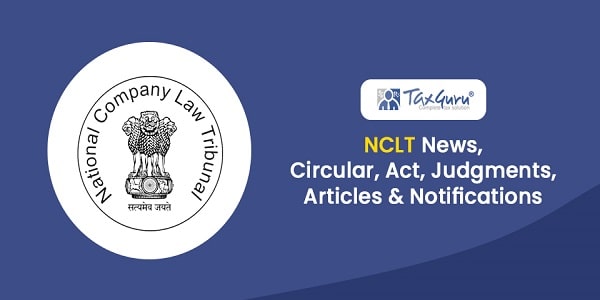

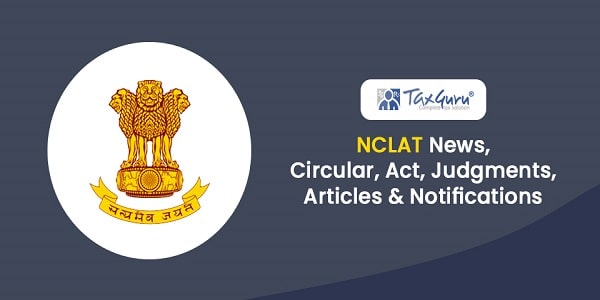







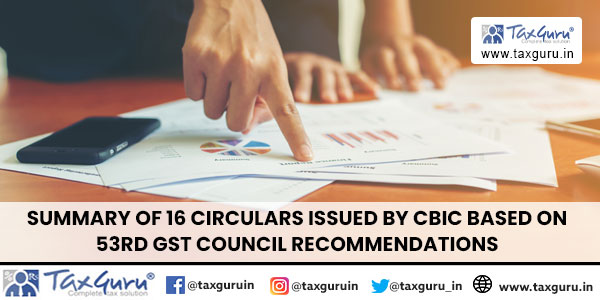

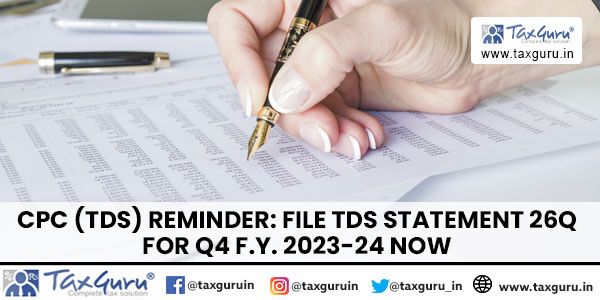

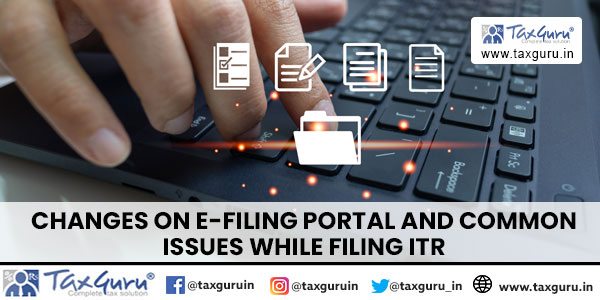
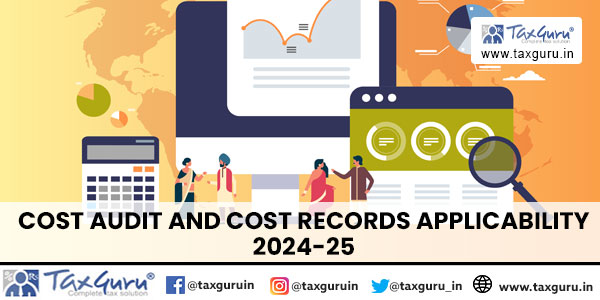









If a system based approach is adopted & there is verification of data of supplies & receipts by the system then why the GST officials required to visit the premises of the GST registrant until & unless they have a valid query & that is made available to the GST registrant & they are not satisfied with the reply.
Until & unless this is implemented, audit is simply a hassle for the GST compliant assessees.